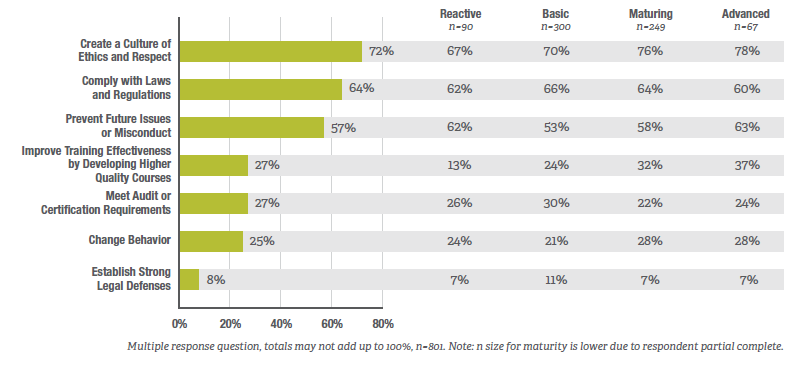This article previously appeared on choate.com.
Greg Keating, chair of Choate’s Labor Employment & Benefits and Whistleblower Defense Groups, and Diana Lloyd, co-chair of Choate’s Government Enforcement and Compliance Group, recently led sessions on workplace investigations during NAVEX Global’s May Master Class webinar, “Conducting and Closing Effective Workplace Investigations.”
Here are the key takeaways from the presentation.
Remember, It Depends
- The nature of the alleged concern is going to dictate key decisions around who investigates, how the investigation is conducted and what kind of report, if any, is completed
- At one end of the spectrum, complaints regarding employment issues (employee morale, boorish behavior) are generally investigated at the HR level
- Employment issues which implicate legal liability such as harassment or discrimination require oversight from Legal
- Concerns raised over perceived issues which implicate potential scrutiny by government agencies typically requires independent investigation by outside counsel
The Best Offense Is a Strong Defense
- Be prepared beforehand in order to conduct an effective investigation by carefully thinking through the investigation protocols
- Take a hard look at your “Speak-up” policy and ensure that you have adequate and varied reporting mechanisms
- Consider training of frontline managers who are most often the ones that receive reports and ensure they understand their responsibility to report and remediate all concerns and to ensure against retaliation
- Identify the various potential stakeholders in your organization and their anticipated roles based on the circumstances
Investigate Every Time
- As Jack and Suzie Welch wrote in a 2012 Reuters op-ed, you must promptly and thoroughly investigate every concern and must resist the temptation to “wish whistleblowers away with the perfunctory spot check”
- Consider providing the individual who has raised the concern with a dedicated contact to raise concerns regarding retaliation and advise managers that the organization will not tolerate retaliation or ostracism
- In conducting the investigation, first gather and review data, then proceed to interviewing witnesses
- Carefully consider reporting stage issues like whether to maintain attorney-client privilege, whether to create a full/limited written report or an oral report
- Whenever possible, circle back with the individual who raised the issue in the first place to provide a summary of what your organization did, what it found and what it is doing to remediate
To learn more about workplace investigations and how you can protect your organization, visit choate.com or contact Greg Keating or Diana Lloyd directly with the information below.
Greg Keating

+1 (617) 248-5163 dlloyd@choate.com |






